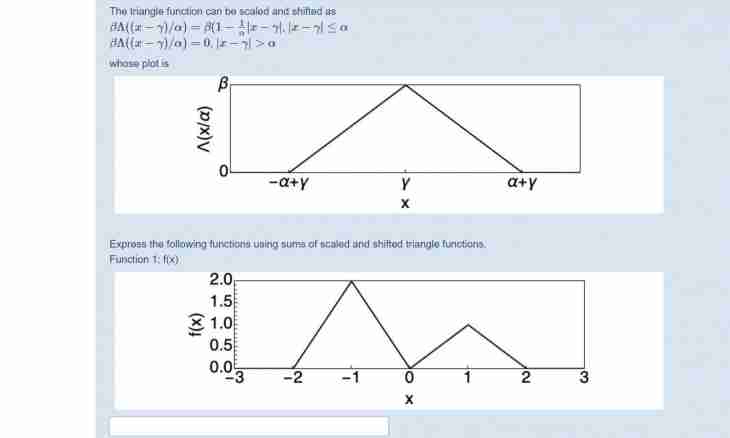The basis in an isosceles triangle is called that from its parties which length differs from lengths of two others. If all three parties are equal, then any of them can be considered the basis. To calculate the sizes of each of the parties including the bases, it is possible in different ways - the choice of one concrete depends on the known parameters of an isosceles triangle.
Instruction
1. Length of the basis (b) of an isosceles triangle in which length of side (a) and size of a corner at the basis is known (α), calculate with use of the theorem of projections. From it follows that required size is equal to two lengths of side increased by a cosine of the angle of the known size: b = 2*a*cos(α).
2. If in the conditions of the previous step to replace the corner adjacent to the basis, the corner lying opposite to it (β) in calculation of length of this party (b) it is possible to use the size of side (a) and other trigonometrical function - a sine - from a half of size of a corner. Multiply these two values and double: b = 2*a*sin(β/2).
3. For the same basic data, as in the previous step, there is one more formula, but it except trigonometrical function includes also extraction of a root. If it does not frighten you, take away from unit a cosine of the angle at triangle top, double the received value, take a root from result and increase by side length: b = a * √ (2 * (1-cos(β)).
4. Knowing length of perimeter (P) and side (a) of an isosceles triangle it is very easy to find length of the basis (b) - just subtract from the first value two second: b = P-2*a.
5. On value of the area (S) of such triangle it is possible to calculate length of the basis (b) too if height (h) of a figure is known. For this purpose divide the doubled square into height: b = 2*S/h.
6. Height (h) lowered on the basis (b) of an isosceles triangle can be used for calculation of length of this party in combination with length of side (a). If these two parameters are known, square height, take away a side length square from the received size, take a square root from result and double: b = 2 * √ (h²-a²).
7. It is possible to use for calculation of length of the basis (b) and the radius (R) of a circumscribed about a triangle circle if the corner lying opposite to the basis (β) is known. Increase the two by the radius and a sine of this corner: b = 2*R*sin(β).

